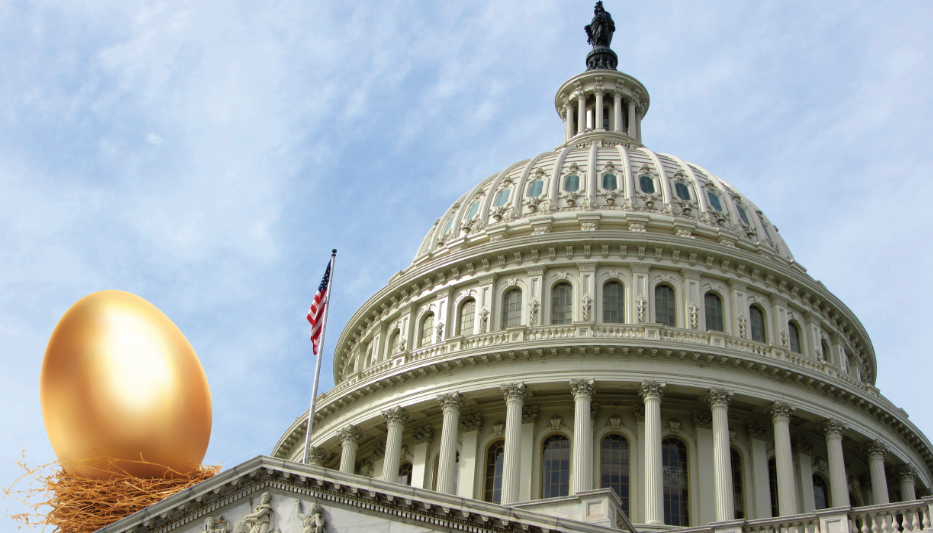All
Inside the SECURE Act
by Joe Ciccarello, CPA, MST, Gray, Gray & Gray, LLP

The passage of the Setting Every Community Up for Retirement (SECURE) Act, which was signed into law in late December 2019, has the potential to make a significant impact on small businesses and their employees. Most significantly, tax credits in the SECURE Act make it more affordable for fuel oil and propane company owners to offer employees a retirement plan. Provisions in the SECURE Act are designed to help smaller companies reduce their taxes and increase the number of companies offering retirement plans.
Previously, smaller business owners wishing to set up a retirement plan for their employees were hampered by administrative costs and complex compliance requirements. Now, however, a series of tax credits will make it simpler and more affordable for the nation’s smaller businesses to offer this important employee benefit to both full-time and part-time workers.
Elements of Impact
Among the elements of the SECURE Act that could impact smaller energy companies are the following:
- The maximum tax credit for an employer who establishes a new 401(k) plan has risen to $5,000 per year for three years (up from $500), beginning with tax years after 2019.
- Small-business owners who implement automatic enrollment in a retirement plan will be eligible for an additional credit of $500.
- This additional $500 credit is available to employers establishing new plans and to employers who convert an existing plan to automatic enrollment.
- Long-term part-time employees will be allowed to participate in an employer’s retirement plan if they work more than 500 hours over three consecutive years.
- Beginning in tax years after 2019, the SECURE Act allows a small business to set up a new retirement plan as late as the tax filing deadline, including extensions, for the taxable year, rather than by the last day of that taxable year.
- Beginning for plan years after December 31, 2020, two or more unrelated employers will be able to create economies of scale by offering a joint “pooled” plan set up as an Open Multiple Employer Plan (MEP).
- There is a fiduciary “safe harbor” for 401(k) plan sponsors who include annuities in offerings to plan participants; the employer would not be able to be sued if the provider of an annuity chosen for the 401(k) plan defrauds the participant or ends up insolvent.
Additional Benefits
In addition to the favorable provisions for smaller business retirement plans, the SECURE Act includes several other benefits for taxpayers who may already have a 401(k) plan or IRA:
- The maximum age for traditional IRA contributions, which was capped at age 70, has been repealed, starting with tax years after December 31, 2019.
- Taking into account longer life expectancy, the age at which required minimum distributions (RMD) must begin has been increased by 1 years, to age 72 for plan participants who attain age 70 in 2020 and beyond.
- The new act waives the 10 percent early withdrawal penalty from a 401(k) for withdrawals up to $5,000 if the money is used to cover expenses related to childbirth or adoption.
- Participants will have a clearer picture of their retirement readiness in the future, as plan benefit statements will be required to include a lifetime income disclosure at least once per year.
- On the negative side, the IRS is eliminating the “stretch IRA” estate-planning strategy that permits non-spouse beneficiaries of IRAs to spread disbursements from the inherited money over their lifetime; the funds must now be distributed within 10 years of the death of the original account holder.
The goal of the SECURE Act is to help ensure more American workers have enough money saved to retire with financial security. As such, it includes some important and helpful benefits for business owners who want to offer a retirement plan to their employees. But a number of critical decisions should take place before starting your own 401(k) plan or setting up an Open Multiple Employer Plan. It is essential that you consult with an experienced tax and benefits advisor to explore your options, potential advantages, and possible pitfalls, before taking steps to add a retirement plan to your employee benefits program.
Joe Ciccarello, CPA, MST, is a partner in the Energy Practice Group at Gray, Gray & Gray certified public accountants and advisors. He can be reached at jciccarello@gggcpas.com.
Related Posts
 Assessing Acquisition Opportunities
Assessing Acquisition Opportunities
Posted on May 31, 2024
 What Speeds Up or Slows Down a Sales Process?
What Speeds Up or Slows Down a Sales Process?
Posted on May 31, 2024
 Fuel Dispenser Pulsars Under Attack
Fuel Dispenser Pulsars Under Attack
Posted on May 31, 2024
 These Benefits Can Help Improve Worker Retention
These Benefits Can Help Improve Worker Retention
Posted on May 20, 2024
Enter your email to receive important news and article updates.
